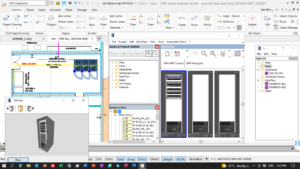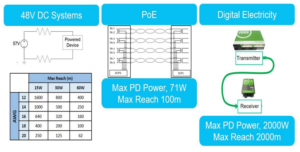Are You Ready For The Era Of Private Wireless Networks?
Written by Steve Carroll
In the next four years, Ericsson predicts that North Americans’ data consumption will increase by 500% per user. In 2026, the average user is expected to consume 48 GB of data monthly by 2026.
Much of this data consumption will occur over carrier networks—the networks that support mobile/cellular connections. Today, mobile networks carry almost 300 times more mobile data traffic than they did in 2011. And the vast majority of this traffic—80%—is now consumed indoors.
What does this all mean for the buildings where the data is consumed?
Adapting properties to support growth in dedicated in-building wireless will be key to keep employees, visitors and guests connected indoors. In fact, many buildings are now being evaluated based on the technology and connectivity they offer to their tenants and occupants. We’ll share more about this concept in a future blog, but there are certification programs that rank new and existing buildings based on their digital infrastructure, future readiness and user connectivity experience. One of the newest categories ranks the in-building wireless capabilities of a facility.
Poor indoor mobile connectivity isn’t something that can be overlooked any longer. But, many times, the building itself prevents a wireless carrier’s cellular signals from coming inside. Material like metal, tinted glass, brick and concrete act as physical barriers that slow down or prevent signal penetration.
In the past, mobile carriers were big investors in wireless infrastructure. If they knew their customers would be located in or near a venue—a high-rise office, arena or shopping district, for example—then they would help fund that facility’s wireless infrastructure to provide customers the best experience possible indoors (sometimes even paying a monthly fee to rent space for the infrastructure). In many situations, it didn’t cost the owner much money to deploy a mobile network.
Today, this approach has changed. Because most carriers no longer have the budgets to continue operating this way, enterprises now have to provide their own in-building wireless. As owners take on these costs, they’re looking for other connectivity options—such as private wireless networks.
In future blogs, we’ll talk about where private wireless networks work best, how they may be positioned to support emerging technology initiatives and best practices to design and deploy private wireless networks. For now, we want to explain what private wireless networks are—and how they’re different.
What Is A Private Wireless Network?
The purpose of a private wireless network is to give individuals or organizations the chance to deploy their own connectivity systems. These systems can operate by leveraging a combination of licensed, quasi-licensed and/or unlicensed spectrum. In other words, they can be LTE (the technology behind 4G) or 5G networks. They’re owned and operated by an enterprise, not a mobile carrier.
Globally, each region of the world is at a different stage of enabling its own access to private wireless spectrum. In the United States, private wireless networks can operate within the (CBRS) Citizens Broadband Radio Service and C-Band spectrum.
The CBRS frequency range spans between 3.5 GHz and 3.7 GHz and is licensed to the U.S. Department of Defense.
In 2015, the U.S. Federal Communications Commission decided to make this spectrum range available to a wider variety of users. The spectrum is “shared” between these groups and governed by the OnGo™ Alliance, a coalition of industry organizations focused on shared-spectrum solutions.
Why Are Owners Choosing Private Wireless Networks?
There are many reasons why an owner may be considering a private wireless network. One of the biggest reasons has to do with costs, like we mentioned above. In some cases, like in highly populated areas, carriers may continue to help fund infrastructure. In situations where they can’t or won’t, owners will be looking for cost-effective ways to bring mobile connectivity into their buildings.
Other reasons involve privacy and security. In a public network, data traffic travels back and forth to a central network in another location. Private wireless network traffic doesn’t have to do that. This not only improves security and privacy, but also lowers latency and improves speed.
Private networks also allow enterprises to control their own bandwidth distribution. A smart manufacturing plant, for example, may choose to prioritize connectivity for its latency-sensitive production lines over back-of-house systems.
Where To Learn More About Private Wireless
Recently, Belden teamed up with Ranplan to lead a discussion on the topic of private wireless.
If you missed it, you can watch Private Wireless Networks Explained on demand. We walk through the basics of private wireless so that you understand its capabilities and benefits in terms of deployment, bandwidth, maintenance and costs.
Because every situation is different, private wireless may not be the exact fit to replace a distributed antenna system (DAS). Belden can help you determine your specific connectivity needs.
To learn more about in-building wireless networks, download this Navigating In-Building Wireless white paper.
Find the original article here









